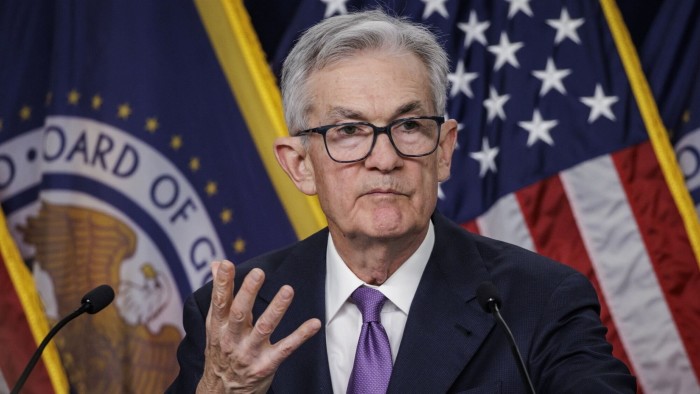The Fed should resist market bullying


Roula Khalaf, Editor of the FT, selects her favourite stories in this weekly newsletter.
The writer is president of Queens’ College, Cambridge, and an adviser to Allianz and Gramercy
“It turns out that inflation was transitory after all; it just took longer.” Such a view is being heard a lot following the sharp fall in US CPI inflation from a high of 9.1 per cent in June 2022 to its latest November reading of 3.1 per cent. Yet it is an interpretation that is misleading, and it is one that puts even more pressure on the US Federal Reserve to prematurely pursue big and early cuts in its policy interest rates.
My discomfort with the return of the transitory narrative is not because of the complexity of “the last mile” in the battle of inflation. Yes, the outright deflation in the goods sector could well reverse before the disinflation in services accelerates sufficiently to ensure a smooth convergence to the Fed’s 2 per cent inflation rate. Yes, core inflation is proving more stubborn than the energy-led fall in headline inflation. And yes, there are genuine questions about the lagged impact of past rate rises and the appropriate inflation target for an economy with an insufficiently flexible supply side over the medium term.
These are all valid issues that are insufficiently internalised by markets. But even if the path to the Fed’s 2 per cent target was smooth from here, which it won’t be, the “it just took longer” formulation is flawed. At the most fundamental level, it ignores the series of consequential changes that have been caused by the persistency of high inflation for more than two years.
Simply put, the transitory characterisation should be viewed through a behavioural analysis rather than a narrow time lens. By deeming it temporary and quickly reversible, a transitory phenomenon calls for policymakers and economic actors to “look through it” — that is, not alter their behaviour in any meaningful manner. That is not what happened in response to the latest inflation shock.
There is no doubt that high inflation has changed a lot already. Despite being inherently dovish, the Fed was forced to raise interest rates by some 5 percentage points in the most compressed hiking cycle in decades. Some banks failed due to mismanagement of the impact of higher rates on their balance sheets. Highly leveraged sectors, such as commercial real estate, are suffering. Transaction volumes in the housing market collapsed with many owners reluctant to sell because it would mean taking on a mortgage with higher rates for their replacement homes. And the list goes in.
The forward-looking aspect of “it just took longer” is also problematic. In the past few weeks, it encouraged a huge market-led loosening of financial conditions. And this was before the fall in yields was further turbocharged last Wednesday by Fed chair Jay Powell’s surprisingly dovish remarks at a press conference that constituted a sudden reversal of his comments just 12 days earlier.
The risk is that the Fed, uncomfortable with the disconnection between its forward policy guidance and market pricing, is pressured into policy actions that please markets but prove inconsistent longer-term with the central bank’s mandate. That would not be new. It played out in January 2019 with a policy U-turn when Powell unveiled new language that opened up the possibility that the next move in rates would be down, six weeks after the central bank put markets on notice of further rises. There was also the April 2020 decision to purchase exchange traded funds of high-yield, or junk, bonds. And in November 2021 to March 2022, there was the slow winding down of large-scale asset purchases.
The specific risk today is that, wishing to avoid unsettling market volatility, the Fed validates the market loosening with sizeable rate cuts but then is forced to reverse course later.
The more the Fed gives in to investor expectations for sizeable and early rate cuts in 2024 — including getting closer to the six cuts priced in for next year — the more the markets will press for an even more dovish policy stance. If investors price in additional rate cuts, it is harder for the Fed to pursue its mandate without a big market reaction.
The Fed’s divergence with the market will prove hard to fix quickly while its policy divergence with the Bank of England and European Central Bank will widen. The more this continues, the greater the risks to economic wellbeing and financial stability.
Rather than being inclined to opt for the easy shortcut associated with the “it just took longer” narrative, both markets and policymakers would be well advised to focus on how much the world has changed in the past few years. The inflation round-trip is neither simple nor complete. The resulting shift in the configuration of the global economy and financial markets will be felt for several years.
Comments